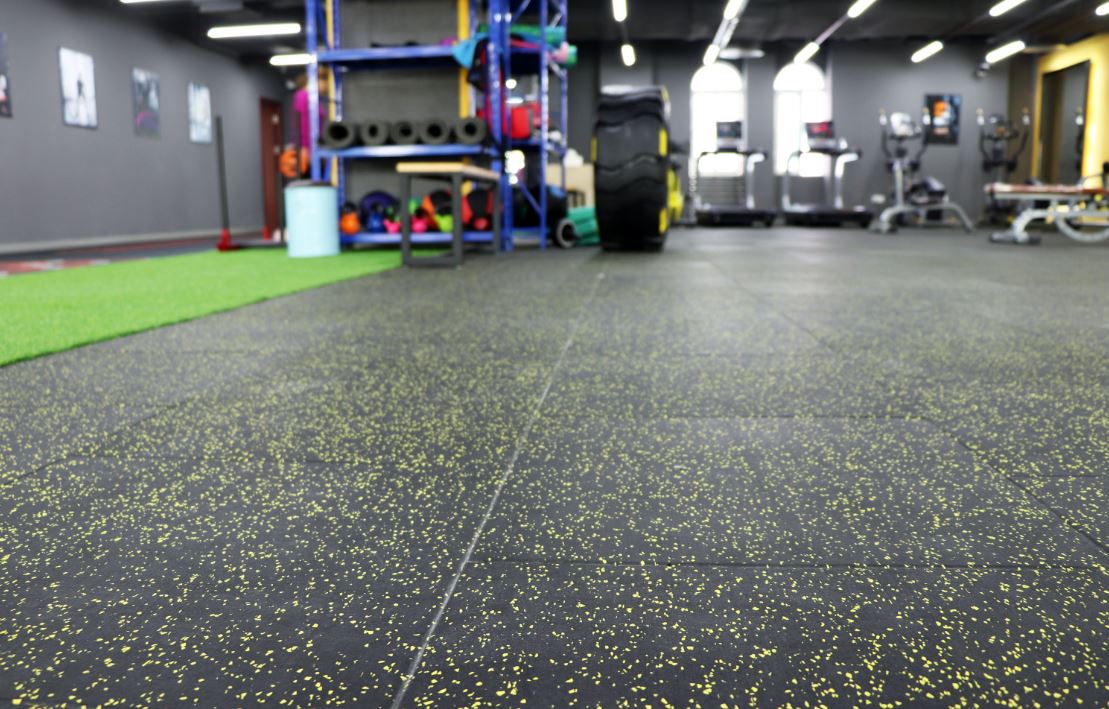When it comes to flooring solutions that offer durability, safety, and style, rubber flooring has emerged as one of the most reliable options in both residential and commercial settings. Known for its resilience and comfort, rubber flooring has found its way into gyms, schools, healthcare facilities, offices, and even modern homes. Its combination of functionality and design versatility makes it a smart investment for anyone seeking long-lasting flooring.
In this blog, we’ll explore what rubber flooring is, its benefits, types, applications, maintenance tips, and why it may be the perfect choice for your next project.
What is Rubber Flooring?
Rubber flooring is made from either natural tree rubber or synthetic materials such as recycled rubber and polymers. It is designed to provide a soft, cushioned, and durable surface that withstands heavy usage. Available in rolls, tiles, or mats, rubber flooring comes in a variety of colors, textures, and patterns, making it adaptable to different environments.
Unlike traditional flooring materials, rubber flooring is known for its resilience, slip resistance, and ability to absorb impact, making it an excellent option for high-traffic areas.
Key Benefits of Rubber Flooring
Durability
Rubber flooring is highly resistant to wear and tear. It can handle heavy foot traffic, dropped weights, furniture movement, and other daily stresses without losing its structure.
Shock Absorption & Comfort
One of the standout features of rubber flooring is its cushioning effect. It absorbs impact and reduces strain on joints, which is why it’s widely used in gyms, fitness centers, and playgrounds.
Slip Resistance
Safety is a top priority in any flooring choice. Rubber flooring naturally offers slip resistance, reducing the risk of accidents in areas prone to spills or heavy activity.
Noise Reduction
The dense, cushioned surface of rubber flooring helps minimize noise, making it a great choice for schools, offices, and multi-story buildings where sound insulation is important.
Eco-Friendly Option
Recycled rubber flooring, made from used tires and other materials, is an environmentally sustainable solution that helps reduce waste.
Easy Maintenance
Rubber flooring is simple to clean and maintain. It doesn’t require waxing or polishing—just regular sweeping and occasional mopping with mild cleaners.
Versatility in Design
With advancements in technology, rubber flooring is now available in a wide range of styles, patterns, and colors, allowing it to blend seamlessly into both modern and traditional spaces.
Popular Types of Rubber Flooring
Rubber Rolls – Ideal for covering large areas such as gyms or fitness studios. They provide a seamless look and strong durability.
Rubber Tiles – Easy to install, replace, and customize. Available in interlocking designs for simple DIY installation.
Rubber Mats – Commonly used in specific areas like playgrounds, industrial workstations, or garage floors.
Textured Rubber Flooring – Designed with patterns for added grip, perfect for wet areas like swimming pools or kitchens.
Common Applications of Rubber Flooring
Gyms & Fitness Centers: Provides shock absorption, reduces noise from weights, and ensures safety for users.
Schools & Playgrounds: Cushioned surfaces protect children from injuries during play.
Healthcare Facilities: Offers comfort, hygiene, and safety in hospitals and clinics.
Offices & Commercial Spaces: Combines durability with professional aesthetics.
Industrial Areas: Withstands heavy machinery, reduces fatigue, and ensures slip resistance.
Residential Homes: Increasingly used in kitchens, basements, and garages for its resilience and easy upkeep.
Rubber Flooring vs. Other Flooring Options
Vs. Vinyl Flooring: Rubber is more durable, eco-friendly, and impact-resistant, though vinyl offers more decorative options.
Vs. Carpet: Rubber is easier to maintain and more hygienic, while carpet provides warmth but is prone to staining.
Vs. Hardwood Flooring: Hardwood looks luxurious but is expensive and requires maintenance, whereas rubber is affordable and low-maintenance.
Vs. Tiles: Tiles are strong but can be slippery and cold; rubber provides cushioning and safety.
Maintenance Tips for Rubber Flooring
To keep rubber flooring in excellent condition, follow these simple steps:
Daily Cleaning – Sweep or vacuum to remove dust and dirt.
Mopping – Use a damp mop with a pH-neutral cleaner. Avoid harsh chemicals.
Stain Removal – Wipe spills immediately to prevent stains.
Protective Measures – Use mats at entrances to reduce dirt buildup.
Avoid Sharp Objects – Prevent scratches by lifting, not dragging, heavy furniture.
Why Choose Rubber Flooring?
Rubber flooring is more than just practical—it’s a smart long-term investment. Its ability to withstand high traffic, its safety features, and its eco-friendly nature make it a versatile option for almost any environment. Unlike traditional flooring that requires frequent maintenance or replacement, rubber flooring provides unmatched reliability.
Whether you’re setting up a home gym, renovating a school, or designing a modern office, rubber flooring delivers comfort, safety, and style all in one package.
Final Thoughts
Flooring is not just about aesthetics—it’s about functionality, safety, and longevity. Rubber flooring Dubai offers all these qualities, making it an excellent choice for both commercial and residential spaces. With its durability, slip resistance, and ease of maintenance, it has rightfully earned its reputation as one of the most practical flooring options available today.
If you want a flooring solution that balances performance and design while standing the test of time, rubber flooring is the perfect choice.




